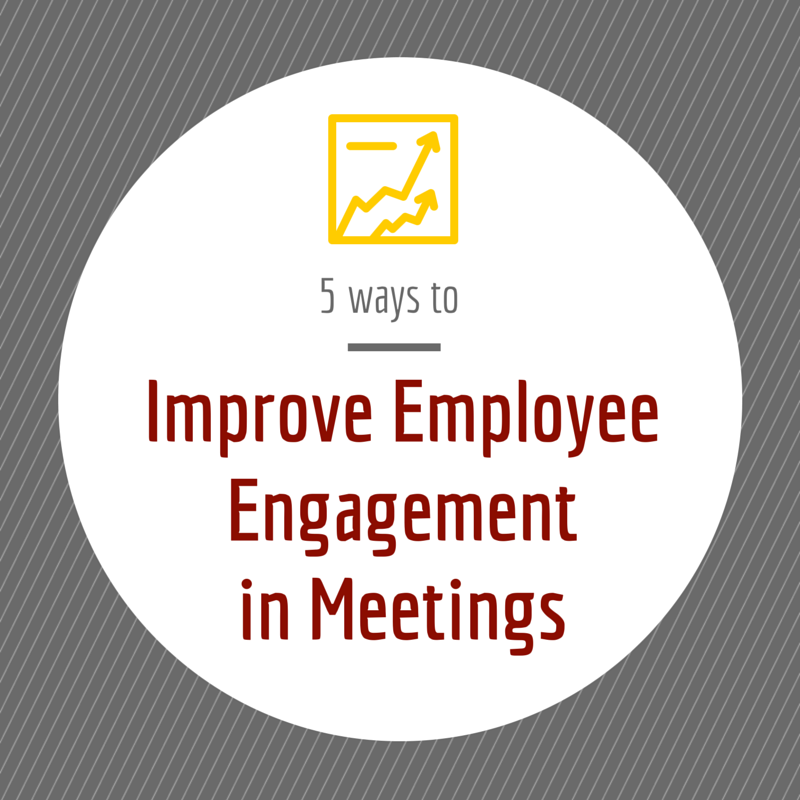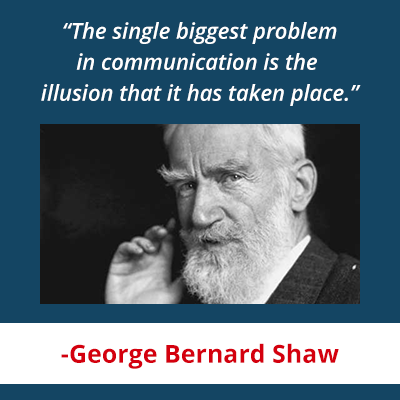5 Ways to Improve Employee Engagement in Meetings …and Why it Matters

Early in my career, my supervisor did me a big favor, although it didn’t feel like it at the time.
Kurt put me on probation for not speaking during meetings. He stated it very simply—Paul, if you don’t speak, you don’t add value.
I had lots of ways to justify my lack of speaking: I was the newest member of the group, I didn’t have much experience, other people seemed to have more to say, I wasn’t sure I had anything of value to add, and, of course, the blockbuster of all: I was shy.
Fortunately, my supervisor wasn’t into explanations or excuses—just results. And suddenly not speaking wasn’t an option for me.
Now, many years later, during training programs on personal effectiveness and coaching with individual managers, I am working to broaden the amount of participation in meetings and to deepen the level of conversation in group settings.
Two key ideas are at the heart of this issue:
First, participants need to embrace this perspective: If you are invited to speak, you are obligated to respond even if it is simply to acknowledge being asked and saying that you don’t have anything to express that hasn’t already been said. Part of being an effective member of any group is to always be self-expressed.
Second, when leading meetings, you need to call on people directly because you simply can not count on people speaking up on their own.
Related: Who Does What in a Collaborative Meeting
What are the five top reasons for making this a priority?
- People want to add value. Speaking in groups is a powerful way to add value in an organization. In fact, one of the keys to being an effective member of any group is to be fully expressed.
- Participation correlates to engagement. When people participate in a dialogue, their relationship to the issue deepens and becomes more authentic. Alignment also comes with true dialogue.
- Each person in a meeting has a unique perspective. If this perspective is left unexpressed, you lose the value that could be added to the conversation.
- To have no voice is to be excluded. Even if it’s not the intention to exclude someone from speaking, by not directly asking for that person’s opinion, the message sent is that you are not interested in his or her views.
- When good conversation occurs, it’s a back-and-forth experience. It’s not dominated by a few, and it’s inclusive and inviting to everyone.
Why is it so difficult to get people to speak up?
I’m not sure how we got to this place. Perhaps it’s a holdover from a dreadful moment in the third grade. Perhaps it comes from the intention to be kind and not put anyone on the spot. Some people have a quiet or reflective conversational style. Sometimes other people speak too much and they can’t get a word in.
Related: Meet a Couple More Meeting Killers
It doesn’t matter how we got here. We are not in a good place. The norm in many organizations is that supervisors and managers have embraced an unwritten rule not to call on people during meetings. And people expect to walk into a meeting and only speak when they feel like it—a deadly combination.
If you want employee engagement and alignment and diversity of thought, you can’t let people in your organization continue to be silent. Employee surveys tell us that employees are not engaged, that many do not feel included. They do not feel valued. And they certainly do not feel connected to management.
It seems like an insurmountable problem — but it’s not.
What is required to get broader participation?
I always thought that if I did everything possible to make it easy for people to express themselves, they’d participate in meetings. I was wrong.
Related: Examine Your Meetings, Question Your Culture
Wanting something is not the same thing as asking for it. Telling people they have permission to speak up will not get people to actually do so. Encouraging people to ask questions will not do it. All the indirect methods we have tried have failed to create the level of conversation that’s essential if you want to be productive when you meet in groups.
In fact, this is one place where the best solution is the simplest solution. Ask for what you want! (In fact, this is a wonderful tip for all of life: ask for what you want, not for what you think you can get.) Sometimes even that is uncomfortable, but being willing to be uncomfortable is what gives you access to leadership, to development, and to being engaged in life.
“Life begins at the edge of your comfort zone.”
Neale Donald Walsch, American author
Make it safe — it’s an invitation, not a demand!
Calling on people in meetings is not the same as putting people into tight spots. My supervisor, Kurt, was not working on effective meetings when he told me I had to speak up or lose my job — he was developing me! Calling on people in meetings is a different situation.
Related: 5 Icebreakers for Distributed Team Meetings
Don’t call on people to put them on the spot, to control them, or to confront a lack of attention. Only call on people because you are interested in their views, ideas, concerns, or help.
When you call on people, think of it as an invitation to speak. Invitations can be declined without consequence. So invite people to contribute to the conversation, but make sure your tone of voice and language correctly imply that it’s fine if they do not.
The Five Ways to Improve Engagement
Here are five ways to improve employee engagement in meetings and create a space within which it is safe to speak up:
- Before each meeting, consider each topic and who you would like to hear from on the subject.
- At the beginning of the meeting, let people know you want their input and will be calling on individuals in an effort to be sure no views are left unexpressed. Let people know they can always decline to speak if what they have to offer has already been covered.
- When when you introduce each topic, be specific about what input you are looking for.
- Before moving between topics, think about who else might have something to contribute to the conversation and call on them.
- Throughout the meeting, be deliberate about looking and listening for who might be subtly signaling that they would like to enter the conversation.
Err on the side of asking people to speak. People have valuable input, if you give them a chance to voice it. Of course, it’s also important to remember that people take things personally—so do this gently. Use an inviting tone, be sincere, and be gracious when people decline.
Camille, would you like to add to our discussion?
Josh, I know this will impact your group, any thoughts?
Carmen, you’ve got the most experience in the group. Do you have any concerns about what we are proposing?
Henry, I’d love to hear your thoughts about this.
After a workshop on meetings, I received two comments from participants. The first comes from Shawnee, who realized she has more to contribute:
“Paul, This is the phrase that has become really important to me: If you are invited or asked to speak, you are obligated to respond. I am a pretty quiet person who I’ve been told is very hard to read. I spend a lot of time waiting until it is my turn to speak, which hardly ever comes.
My boyfriend asks me all the time what I am thinking, and my typical response is, ‘I don’t know.’ I can tell that it really frustrates him and probably a lot of other people as well. I have been making a conscious effort to give my boyfriend a solid response. I’ve also set a goal to speak at least once in every meeting.”
The second comment comes from a Todd, a supervisor who has embraced the notion of calling on people:
“I have intentionally focused on calling on people strategically and gently—perhaps those who are quiet or seem frustrated…. It’s like magic—an awesome tool.”
So let’s begin to call on people—”strategically and gently,” as Todd put it. And that means being thoughtful and intentional about how you invite people into the conversation.
You want people to say the following about participating in your meetings:
- You better prepare because you are expected to contribute.
- There is always enough time set aside for each topic so everyone who wants to speak can.
- When you do speak, the group will consider and respond to what you say.
- You are going to love going to this meeting because it’s comfortable, on purpose, and truly a group conversation.
TRY THIS:
For the next two weeks:
- Notice who hasn’t spoken yet in the conversation.
- Notice people who look (or sound, in a virtual meeting) as if they are eager to ask a question or make a comment.
- Look for an opportunity in every meeting to call on someone directly and see what happens.
- Reflect after each meeting and assess whether you achieved the level of participation required for each topic.
- Reflect after each meeting and assess how gentle and gracious you were in dealing with each person who spoke.
I like safety and comfort and taking care of people, but not at the expense of organizational effectiveness, talent development, inclusion, and engagement. And I know in my heart, that people will respond authentically if I can give them the specific opportunity to do so. A little discomfort on my part or theirs is worth the price.



